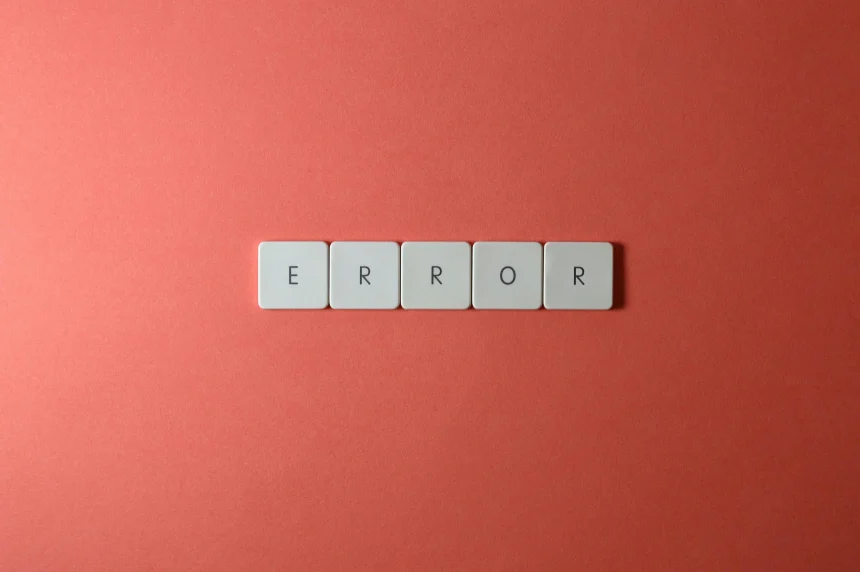Introduction
Imagine you’re in the middle of a crucial online transaction, and suddenly, an error code flashes on your screen. Panic sets in as you wonder what went wrong. This scenario is all too common for users of FintechAsia, a leading financial technology platform. Error codes can be frustrating, but they are essential for diagnosing and resolving issues quickly. This article will delve into the world of error codes fintechasia, exploring their meanings, causes, and solutions.
What Are Error Codes Fintechasia?
Error codes are numerical or alphanumeric messages a system generates to indicate something has gone wrong. These codes help developers and users quickly identify and diagnose issues. In the context of FintechAsia, error codes are crucial for maintaining smooth financial transactions and ensuring security.
Categories of FintechAsia Error Codes
FintechAsia error codes can be broadly categorized into four types:
General Error Codes
- Error Code 100: Invalid Request
- Error Code 101: Unauthorized Access
Transaction Error Codes
- Error Code 200: Insufficient Funds
- Error Code 201: Transaction Declined
- Error Code 202: Currency Not Supported
Authentication Error Codes
- Error Code 300: Invalid Credentials
- Error Code 301: Session Expired
- Error Code 302: Multi-Factor Authentication Failed
System Error Codes
- Error Code 400: Service Unavailable
- Error Code 401: Timeout Error
- Error Code 402: Internal Server Error
Common Causes of FintechAsia Error Codes
Understanding the common causes of these error codes can help troubleshoot and prevent them.
- Network Connectivity Issues Poor internet connection can lead to various error codes, disrupt transactions, and cause timeouts.
- Database Errors Issues with FintechAsia’s database, such as incorrect information or overload, can trigger error codes.
- API Integration Failures Problems with API integrations can prevent FintechAsia from communicating with other systems, leading to errors.
- Security Breaches Unauthorized access attempts can trigger security-related error codes, protecting user data.
- System Maintenance and Updates Scheduled maintenance or updates can temporarily cause error codes, affecting user experience.
How to Troubleshoot Error Codes Fintechasia
Here are some basic steps to troubleshoot standard FintechAsia error codes:
- Check Your Internet Connection Ensure that your internet connection is stable and working.
- Verify Your Credentials Double-check that you are entering the correct username and password.
- Update Your Software: Ensure you are using the latest version of the FintechAsia app or platform.
- Consult FintechAsia Documentation Refer to the official documentation for specific error codes and their solutions.
What are some real-life examples of error codes fintechasia?
Here are some real-life examples of error codes in fintechasia and their typical scenarios:
Error Code 100: Invalid Request
- Scenario: A user tries to initiate a transaction with incomplete or incorrect information, such as missing mandatory fields like the recipient’s account number or an invalid transaction amount.
Error Code 200: Insufficient Funds
- Scenario: A user attempts to transfer more money than is available in their account. This error ensures that transactions cannot proceed without sufficient balance.
Error Code 301: Session Expired
- Scenario: A user has been inactive for a while, and their session times out for security reasons. This error prompts the user to log in again to continue their activities.
Error Code 400: Service Unavailable
- Scenario: During a system maintenance window, users trying to access FintechAsia services might encounter this error, indicating that the service is temporarily down.
Error Code 302: Multi-Factor Authentication Failed
- Scenario: A user fails to provide the correct multi-factor authentication code within the required time frame, preventing unauthorized access to their account.
Error Code 201: Transaction Declined
- Scenario: A transaction is declined for various reasons, such as exceeding transaction limits, being flagged for potential fraud, or issues with the recipient’s account.
What are the most common error codes in FintechAsia?
The most common error codes in FintechAsia typically fall into a few key categories, each addressing different aspects of the platform’s operations. Here are some of the most frequently encountered error codes:
Authentication and Authorization Errors
- Error Code 100: Invalid Request
- Description: This error occurs when a user submits a request with missing or incorrect information.
- Scenario: Attempting to log in with an incomplete form.
- Error Code 101: Unauthorized Access
- Description: This error indicates the user is trying to access a resource without the necessary permissions.
- Scenario: Trying to view account details without proper authentication.
Transaction Errors
- Error Code 200: Insufficient Funds
- Description: This error is triggered when a user attempts to make a transaction without enough balance in their account.
- Scenario: Trying to transfer more money than is available in the account.
- Error Code 201: Transaction Declined
- Description: This error occurs when a transaction is rejected for various reasons, such as exceeding transaction limits or potential fraud detection.
- Scenario: A flagged transaction for unusual activity.
Network and Connectivity Issues
- Error Code 400: Service Unavailable
- Description: This error indicates that the FintechAsia service is temporarily down, often due to maintenance or server issues.
- Scenario: Attempting to access the platform during scheduled maintenance.
- Error Code 401: Timeout Error
- Description: This error occurs when a request takes too long to process, often due to network issues.
- Scenario: A transaction request is timing out due to a slow internet connection.
System Errors
- Error Code 402: Internal Server Error
- Description: This error signifies a problem within the FintechAsia server, preventing the completion of a request.
- Scenario: Encountering a server malfunction while processing a transaction.
These error codes are designed to help users and developers quickly identify and resolve issues, ensuring a smoother and more secure experience on the FintechAsia platform.
Conclusion
While sometimes frustrating, error codes in FintechAsia are essential for maintaining the integrity and security of financial transactions. By understanding these codes and knowing how to troubleshoot them, users can ensure a smoother and more secure experience. Remember, the next time you encounter an error code, it’s not just a problem; it’s a guide to a solution.
Frequently Asked Questions (FAQs)
What should I do if I encounter an error code on FintechAsia?
If you encounter an error code on FintechAsia, check your internet connection and ensure all required fields are filled out correctly. Refer to the specific error code message for guidance and consult FintechAsia’s official documentation or support for detailed troubleshooting steps.
Why do I keep getting the “Insufficient Funds” error code?
The “Insufficient Funds” error code indicates that your account balance is too low to complete the transaction. Verify your account balance and ensure you have enough funds before attempting the transaction again. If the issue persists, contact FintechAsia support for assistance.
How can I resolve the “Invalid Credentials” error code?
The “Invalid Credentials” error code means that the username or password you entered is incorrect. Double-check your login details and try again. If you have forgotten your password, use the password recovery option provided by FintechAsia to reset it.
What does the “Service Unavailable” error code mean?
The “Service Unavailable” error code typically indicates that FintechAsia’s services are temporarily down, possibly due to maintenance or server issues. Wait for a while and try reaccessing the service later. Check FintechAsia’s official channels for any announcements regarding service interruptions.
How can I prevent myself from encountering error codes on FintechAsia?
To minimize the chances of encountering error codes on FintechAsia, ensure you have a stable internet connection, keep your software updated, and follow the platform’s guidelines for transactions and security. To stay informed, regularly check for any updates or maintenance schedules announced by FintechAsia.





